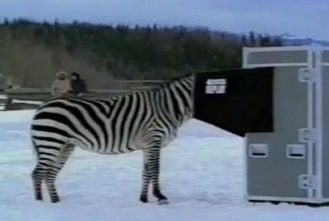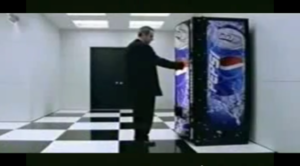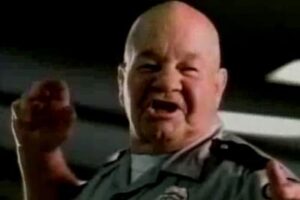Key Takeaways
- The “2003 Bud Light No Pets Allowed” commercial is a classic example of humor in advertising.
- The commercial features a man trying to sneak his pet dog into a hotel that doesn’t allow pets.
- The humor comes from the man’s creative attempts to disguise his dog as different objects, such as a lamp and a potted plant.
- The commercial effectively uses humor to capture the audience’s attention and make the brand memorable.
- The commercial also highlights the importance of humor in advertising, as it can help create a positive association with the brand.
- Overall, the “2003 Bud Light No Pets Allowed” commercial is a prime example of how humor can be used effectively in advertising to engage and entertain audiences.

2003 Bud Light No Pets Allowed: A Look Back at the Controversial Commercial
When it comes to memorable advertisements, few can forget the infamous “2003 Bud Light No Pets Allowed” commercial. This 30-second spot, which aired during the Super Bowl, caused quite a stir and left viewers divided. In this article, we will take a closer look at the controversy surrounding this commercial, its impact on Bud Light’s brand image, and the lessons that can be learned from it.
The Controversial Commercial
The “2003 Bud Light No Pets Allowed” commercial featured a group of friends attending a house party, where a talking dog named Spuds MacKenzie was the center of attention. As the host announced that no pets were allowed, chaos ensued as partygoers were seen hiding their pets in various places. The ad concluded with the tagline, “For the great taste that won’t fill you up and never lets you down, make it a Bud Light.”
At first glance, the commercial seemed like a lighthearted and humorous take on the idea of sneaking pets into a party. However, it quickly drew criticism from animal rights activists and pet owners who felt that the ad promoted irresponsible behavior towards animals. They argued that the commercial trivialized the importance of responsible pet ownership and could potentially encourage people to bring their pets to places where they were not welcome.
Impact on Bud Light’s Brand Image
The controversy surrounding the “2003 Bud Light No Pets Allowed” commercial had a significant impact on the brand’s image. While Bud Light had always positioned itself as a fun and carefree beer for social gatherings, this particular ad crossed a line for many viewers. The negative backlash from animal rights activists and pet owners resulted in a tarnished reputation for Bud Light, with many people boycotting the brand and urging others to do the same.
Furthermore, the controversy highlighted the importance of responsible advertising and the need for companies to be mindful of the messages they convey through their commercials. Bud Light’s attempt at humor backfired, and instead of generating positive buzz, the brand found itself at the center of a heated debate.
Lessons Learned
The “2003 Bud Light No Pets Allowed” commercial serves as a valuable lesson for advertisers and marketers alike. Here are some key takeaways:
1. Know your audience
Understanding your target audience is crucial when creating advertisements. Bud Light failed to recognize that a significant portion of their consumer base consisted of pet owners who might not appreciate the humor in a commercial that seemingly promoted irresponsible behavior towards animals. By conducting thorough market research and audience analysis, brands can avoid alienating their customer base and ensure that their advertisements resonate with the right audience.
2. Consider potential backlash
Before releasing an advertisement, it is essential to consider the potential backlash it may generate. Bud Light should have anticipated the negative response from animal rights activists and pet owners, given the sensitive nature of the topic. By conducting focus groups or seeking feedback from diverse perspectives, brands can identify potential issues and make necessary adjustments to their advertisements before they go live.
3. Be responsible in messaging
Advertising has a powerful influence on society, and brands have a responsibility to be mindful of the messages they convey. Bud Light’s commercial trivialized the importance of responsible pet ownership and could have had unintended consequences. Advertisers should prioritize ethical messaging and avoid promoting behavior that could be harmful or irresponsible.
4. Respond appropriately to criticism
When faced with criticism, brands should respond in a timely and respectful manner. Bud Light’s initial response to the controversy was perceived as dismissive and defensive, which further fueled the backlash. By acknowledging the concerns raised and taking appropriate action, brands can demonstrate their commitment to addressing the issue and rebuilding trust with their audience.
In Conclusion
The “2003 Bud Light No Pets Allowed” commercial serves as a cautionary tale for advertisers. It reminds us of the importance of understanding our audience, considering potential backlash, being responsible in messaging, and responding appropriately to criticism. By learning from Bud Light’s misstep, brands can avoid similar controversies and ensure that their advertisements resonate positively with their target market.
Remember, advertising is a powerful tool, and with great power comes great responsibility.

Frequently Asked Questions
What is the 2003 Bud Light No Pets Allowed commercial?
The 2003 Bud Light No Pets Allowed commercial is a popular advertisement that aired in 2003. It features a man trying to bring his pet dog into a bar, but he is stopped by the bouncer who informs him that pets are not allowed. The commercial humorously highlights the tagline ‘For the great taste that won’t fill you up and never lets you down.’
Who starred in the 2003 Bud Light No Pets Allowed commercial?
The 2003 Bud Light No Pets Allowed commercial starred actor Cedric Yarbrough as the bouncer and a man named Mike as the pet owner.
Why is the 2003 Bud Light No Pets Allowed commercial iconic?
The 2003 Bud Light No Pets Allowed commercial is iconic because it effectively combines humor and the brand’s tagline to create a memorable and entertaining advertisement. The commercial resonated with audiences and became a popular cultural reference.
What is the message of the 2003 Bud Light No Pets Allowed commercial?
The message of the 2003 Bud Light No Pets Allowed commercial is that Bud Light is a great-tasting beer that is light and refreshing, perfect for any occasion. The commercial emphasizes the brand’s tagline ‘For the great taste that won’t fill you up and never lets you down.’
Where can I watch the 2003 Bud Light No Pets Allowed commercial?
You can watch the 2003 Bud Light No Pets Allowed commercial on various video-sharing platforms, such as YouTube. Simply search for ‘2003 Bud Light No Pets Allowed commercial’ and you should be able to find it.


